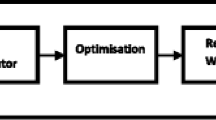Abstract
Ship routing and scheduling is an important activity for ship operators at both planning and operation levels. Ship operators, as commercial entities, have to closely monitor routing and scheduling in relation to their financial implications. This paper presents an integrated approach for port selection, ship scheduling and financial analysis. It aims to discuss the architecture and the major features of an integrated intelligent system for liner shipping. Currently many liners still perform ship routing and scheduling manually based on professional knowledge and experience. The proposed system is developed with an international liner company and is flexible to account for user inputs according to the real situation in the port selection module. Also the system provides two modes in the scheduling module: automatic and manual. The automatic mode makes use of an optimisation model to find the optimal proforma schedule (PFS). The manual mode allows manual modifications to be performed to accommodate the existing liners to allow for a smooth implementation. The financial analysis module examines the financial consequences of the PFS which are crucial for making commercial decisions. As a whole, the solution algorithm calls for an integrated approach that can integrate data from various sources with different levels of certainties and accuracies, knowledge gained from practical operations and optimisation routines. The system will be useful for ship operators in liner shipping.
Similar content being viewed by others
References
Lam, J. S. L., Yap, W. Y., & Cullinane, K. (2007). Structure, conduct and performance on the major liner shipping routes. Maritime Policy & Management, 34(4), 359–381. doi:10.1080/03088830701539149.
Ronen, D. (1983). Cargo ship routing and scheduling: Survey of models and problems. European Journal of Operational Research, 12, 119–126. doi:10.1016/0377-2217(83)90215-1.
Ronen, D. (1993). Ship scheduling: The last decade. European Journal of Operational Research, 71(3), 325–333. doi:10.1016/0377-2217(93)90343-L.
Kim, S. H., & Lee, K. K. (1997). An optimisation-based decision support system for ship scheduling. Computers & Industrial Engineering, 33(3/4), 689–692.
Christiansen, M., Fagerholt, K., & Ronen, D. (2004). Ship routing and scheduling: Status and perspectives. Transportation Science, 38(1), 1–18. doi:10.1287/trsc.1030.0036.
Fagerholt, K., & Christiansen, M. (2000). A travelling salesman problem with allocation, time window and procedence constraints—Application to ship scheduling. International Transactions in Operational Research, 7, 231–244. doi:10.1111/j.1475-3995.2000.tb00196.x.
Fagerholt, K. (2001). Ship scheduling with soft time windows: An optimization based approach. European Journal of Operational Research, 131, 559–571. doi:10.1016/S0377–2217(00)00098-9.
Christiansen, M., & Fagerholt, K. (2002). Robust ship scheduling with multiple time windows. Naval Research Logistics, 49, 611–625. doi:10.1002/nav.10033.
Brønmo, G., Christiansen, M., Fagerholt, K., & Nygreen, B. (2007). A multi-start local search heuristic for ship scheduling—A computational study. Computers & Operations Research, 34(3), 900–917. doi:10.1016/j.cor.2005.05.017.
Bruzzone, A., & Orsoni, A. (2002). AI-based optimization for fleet management in maritime logistics. In Proceedings of the 2002 winter simulation conference (pp. 1174–1182).
Ting, S. C., & Tzeng, G. H. (2003). Ships scheduling and cost analysis for route planning in liner shipping. Maritime Economics and Logistics, 5, 378–392. doi:10.1057/palgrave.mel.9100087.
Saaty, T. L. (1980). The analytical hierarchy process. New York: McGraw-Hill.
Lam, J. S. L., Lam, S. H., & Dai, J. (2007). A decision support system for port selection. In Proceedings of the international congress on ports in proximity, Antwerp and Rotterdam, 5–7 December 2007.
Author information
Authors and Affiliations
Corresponding author
Rights and permissions
About this article
Cite this article
Lam, J.S.L. An integrated approach for port selection, ship scheduling and financial analysis. Netnomics 11, 33–46 (2010). https://doi.org/10.1007/s11066-009-9036-3
Received:
Accepted:
Published:
Issue Date:
DOI: https://doi.org/10.1007/s11066-009-9036-3




